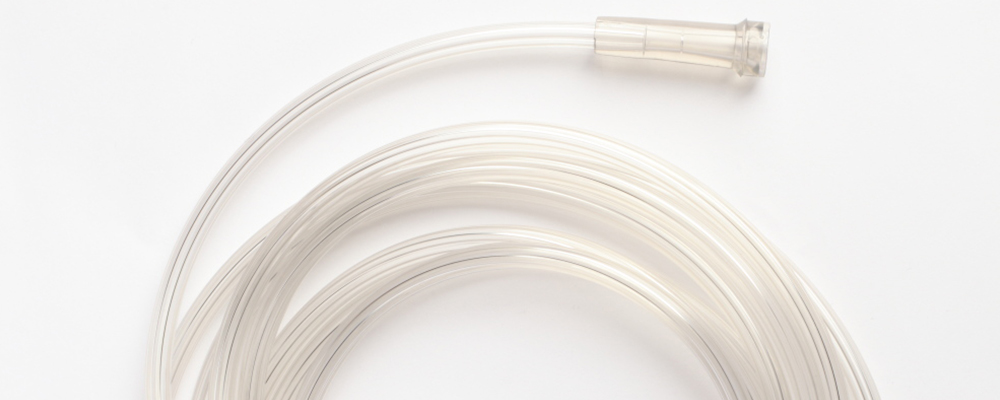
PVC in Medical products
PVC has revolutionised the delivery of healthcare since the 1960s and continues today to play a pivotal role in modern healthcare. It is the most widely used material for disposable medical devices as well as being used in hospital fit-outs for flooring and wall coverings.
Blood bags and intravenous tubing are common examples of flexible vinyl medical products. To make PVC flexible, plasticisers are added. As with all medical devices, flexible PVC medical equipment containing plasticiser is subject to stringent pre- and post-market control and evaluation procedures to ensure safety and performance. Therefore, PVC medical applications have been tried and tested; and proved to provide safe and high-quality healthcare applications.
Since the 1940s, the most commonly used plasticisers have come from the family of phthalate esther compounds, and of these, the most widely used in medical products is DEHP (di-2-ethylhexyl phthalate). Sometimes DEHP is known as DOP (di-octyl phthalate).
Since the 1970s, the potential health impacts of phthalates have been extensively studied. DEHP is not considered a likely carcinogen for humans. However, in rodent studies, DEHP is suspected of interfering with the androgen hormone and affecting male rodent reproductive development. Many of the recent studies have concentrated on this area of research.
In the general population, DEHP toxicity has been found to be of low concern for human health. The level of exposure is low and the chemical metabolises rapidly in humans and is excreted readily.
However, certain patients are potentially exposed to high levels of DEHP from medical products, especially during life saving, intensive care procedures. Particularly for neonate (or premature) male babies there is concern about whether DEHP exposure affects their reproductive development.
Many regulatory authorities in major regions around the world, including Australia, have assessed the safety of DEHP plasticised medical products and continue to approve its use. The assessment of potential risks related to phthalates, and in particular the use of the DEHP, in PVC medical devices has been subject to scientific and policy review by the European Union (EU) authorities1. The EU has introduced specific labelling requirements for all devices containing phthalates that are classified as carcinogenic, mutagenic or reprotoxic (CMR)2, 3, 4. France has restricted the use of DEHP in medical tubing for pediatric and maternity wards since July 2015.
Across the United States, Canada and Europe, all agencies have stated that when considering limiting the use of DEHP in particular medical devices and/or procedures, it is important to consider whether the health benefits of the medical procedures outweigh the risks. A recent Danish study5 on the feasibility of non-phthalate alternatives has found that the technical applicability of DEHP substitutes requires further assessment to ensure patient safety and appropriate disease treatment.
Alternative plasticisers
With the industry's commitment to innovation and continuous improvement of safety, performance and cost efficiency, the value chain has made alternative plasticisers available for almost all healthcare applications.
Plasticisers such as adipates, Butyryltrihexylcitrate (BTHC), Cyclohexane-1,2-dicarboxylic acid, diisononylester (Hexamoll DINCH), Di(2-ethylhexyl)terephthalate (Eastman 168), polymerics and trimellitic acid, 2-ethylhexylester (TOTM) have been used for a number of years in a large range of healthcare applications. The technical performance of these alternative plasticisers in PVC is comparable to that of DEHP.
Some of them (for example BTHC, Hexamoll DINCH and TOTM) have been shown to be suitable substitutes for DEHP in blood bags as they are capable of stabilising red blood cells and have no effect on the other essential blood properties. Hexamoll DINCH is being used in enteral nutrition, for medical tubing systems and in pediatric applications, especially in platelet bags. TOTM is also being used in medical tubing for enteral nutrition products.
The industry supports the ongoing assessment of the safety of all plasticiser types to ensure that PVC-based healthcare technologies continue to benefit patients and meet the needs of healthcare professionals thanks to their key properties - optimal technical performance, safety, comfort in use and cost-efficiency.
Read more about how plasticisers are used to improve the flexibility of PVC products.
References
1 Opinion on the Safety of Medical Devices Containing DEHP-plasticized PVC or other plasticisers on Neonates and Other Groups Possibly at Risk, Scientific Committee on the Emerging and Newly Identified Health Risks (SCENIHR), Health and Consumer Protection Directorate General, European Commission, February 2008
http://ec.europa.eu/health/ph_risk/committees/04_scenihr/docs/scenihr_o_01 4.pdf
2 Medical Device Directive 93/42/EEC as amended in 2007 by Directive2007/47/EC.
http://eurlex.europa.eu/LexUriServ/LexUriServ.douri=OJ:L:2007:247:0021:0055:EN:PDF
3 Since March 2010, a label must be placed on the device itself and/or on the packaging for each unit. The label aims to enable healthcare professionals to use this equipment safely and, where needed, take appropriate precautionary measures for patients at risk of over-exposure.
4 CMR: carcinogenic, mutagenic or toxic to reproduction, in accordance with Annex I to Directive 67/548/EEC.
http://europa.eu/legislation_summaries/consumers/product_labelling_and_packaging/l21276_en.htm
5 Danish Ministry of the Environment, Environmental Protection Agency, Alternatives to classified phthlates in medical devices Environmental Project No. 1557, 2014.





